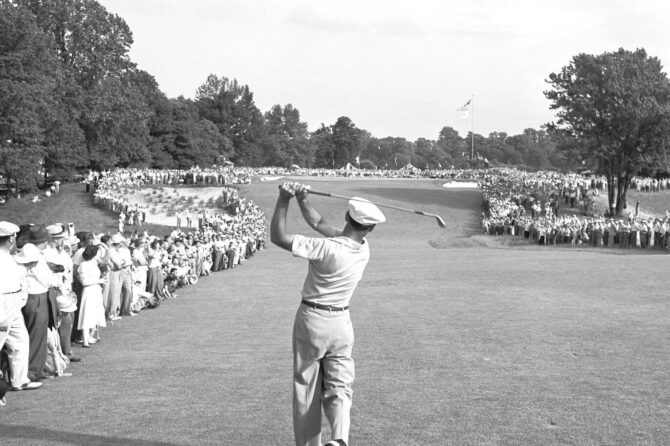Vijay Singh’s method of shot execution is defined by a harmonious blend of power and accuracy. His swing mechanics demonstrate a deep understanding of physics and biomechanics, enabling him to achieve maximum club speed while retaining control. **Key aspects of Singh’s technique include:**
- correct Grip: Singh utilizes a neutral grip that enhances his ability to align the clubface at impact.
- Stable Stance: His athletic posture provides essential stability, crucial for maintaining balance throughout the swing.
- Complete Hip Turn: Singh stresses the importance of a full shoulder and hip rotation during the backswing, facilitating a powerful transition into the downswing.
A critical element of his shot execution is the timing and rhythm he achieves through dedicated practice and mental planning. He employs **mental visualization techniques**, rehearsing each shot to improve focus and alleviate anxiety. Moreover, Singh incorporates **visualization techniques** into his practice, allowing him to mentally rehearse each shot before execution. This mental preparedness fosters a sense of calm and focus, which is essential in high-pressure situations typical of competitive golf. Notably, the **mechanical components of his shot include:**
- Extension Through Impact: Singh achieves significant extension of his arms toward the target, ensuring optimal follow-through.
- Right arm Drive: He actively drives his right arm down the target line, maximizing both distance and accuracy.
- Stability at Impact: His ability to return his hands to the address position at impact is a hallmark of his swing, yielding consistent results.
When evaluating Singh’s overall mechanics, it becomes clear that his success arises from a delicate balance of physical skill and mental strength. **Factors contributing to his effectiveness include:**
- Dynamic Range of Motion: Singh maintains flexibility in his hips and shoulders, allowing for a full range of motion.
- Pre-Shot Routine: His pre-shot routine prepares him for focused execution, integrating both physical and psychological elements.
- Adaptability: He showcases the ability to modify his techniques based on course conditions and shot requirements, reflecting a strategic understanding of the game.
Mental Resilience and Focus: Keys to Competitive Success
The cornerstone of Vijay Singh’s success on the golf course is his unwavering mental resilience. This trait enables him to maintain focus even in high-pressure situations, which is essential in competitive settings. Singh has frequently highlighted the need for a strong mental game, asserting that a golfer’s mindset is as crucial as physical skill. He employs various mental strategies, allowing him to return to a calm and focused state after facing setbacks. Techniques such as visualization and positive self-talk play a vital role in his ability to remain centered, notably during challenging tournaments.
Another crucial aspect of Singh’s approach is his pre-shot routine, which illustrates how essential practices can enhance concentration and performance. By establishing a consistent routine, he conditions his mind and body to prepare for each shot, reducing anxiety and distractions. His routine frequently includes specific checks for grip, stance, and alignment—actions that ground him in the present moment. This disciplined approach reinforces the notion that mental focus is not merely about concentration but about creating a habitual framework that fosters confidence and clarity during play.
Moreover, the ability to manage emotions effectively significantly contributes to his competitive edge. Singh’s history of overcoming challenges has equipped him with unique insights into handling pressure. Whether it’s maintaining composure after a poor shot or managing the anticipation of a crucial putt, his experiences have shaped him into a model of resilience. Aspiring golfers can learn from Singh’s commitment to mental fortitude, which is instrumental in cultivating a positive attitude and resilient mindset essential for enduring the trials of competitive golfing.
Strategic Course Management: Analyzing Singh’s Decision-Making
Vijay Singh’s approach to course management exemplifies the significance of strategic decision-making in professional golf. His methodologies involve a thorough evaluation of each hole’s layout, considering factors such as wind conditions, pin placement, and the golfer’s unique skill set. By prioritizing risk management, Singh emphasizes the necessity of making informed choices that maximize scoring opportunities while minimizing potential hazards. Key techniques include:
- Evaluating Risk vs. Reward: Understanding when to play aggressively and when to hold back is crucial.
- Leveraging Course Knowledge: Familiarity with the course can dictate shot selection and strategy.
- Adjusting to Conditions: Modifying strategies based on environmental variables enhances decision-making.
Singh’s tactical acumen is also evident in his shot-making decisions. By analyzing various approaches to each shot, he demonstrates how a golfer can optimize their performance based on current circumstances. This involves selecting the appropriate club, determining the ideal swing, and visualizing the ball’s flight path, thereby enhancing accuracy and consistency. Essential components of his shot-making strategy include:
| Component | Description |
|---|---|
| Club Selection | Choosing the right club based on distance and lie. |
| Target Visualization | Imagining the shot trajectory and landing spot. |
| Post-Shot Analysis | Evaluating outcomes to inform future decisions. |
Additionally, Singh’s ability to remain adaptable under pressure further distinguishes his decision-making process. Each round presents a unique set of circumstances, and Singh advocates for flexibility in approach. By employing mental strategies such as visualization, breathing techniques, and routine execution, he equips golfers to navigate the complexities of the game more effectively. The following principles are essential to maintaining focus:
- Routine Execution: Establishing a consistent pre-shot routine reduces anxiety and boosts confidence.
- Mental resilience: Developing the ability to stay positive despite challenges is essential for success.
- Adaptive Mindset: Being open to modifying strategies based on current performance and conditions enhances adaptability.
Practice Regimens: Building Consistency through Repetition
Vijay Singh underscores the vital role of structured practice in developing a reliable golf game. By implementing a diligent routine, golfers can cultivate the muscle memory necessary for consistent performance. Singh’s methodology suggests that practice should be both intentional and varied, allowing players to focus on different aspects of their swing and overall technique. This holistic approach to practice promotes not just repetition but also adaptability on the course.
Central to Singh’s training ideology is the importance of setting clear, achievable goals. To build a solid foundation, he recommends breaking down practice sessions into manageable segments, each targeting a specific skill. Consider the following components:
- Driving: Focus on distance and accuracy with your driver.
- Iron Play: Enhance control and precision with your irons.
- Short Game: Improve chipping and putting to lower scores.
To further refine skills, golfers can utilize a table to track their progress over time. This not only provides a visual representation of advancement but also encourages accountability in practice regimens. Below is a simple format that can be tailored to individual goals:
| Skill Component | Session Goal | Performance Measurement |
|---|---|---|
| Driving | Achieve 250 yards consistently | Average distance per session |
| Iron Play | Hit 80% of greens in regulation | GIR percentage |
| Short Game | Get up and down 70% of the time | Up-and-down percentage |
Adapting to Pressure Situations: Lessons from Singh’s Play
Vijay Singh’s capacity to perform under pressure is a cornerstone of his success on the golf course. One of the key strategies he employs is a meticulous pre-shot routine that fosters consistency and mental clarity. This routine allows Singh to focus on each shot individually, minimizing distractions and enabling him to visualize the outcome effectively. **The elements of his pre-shot routine include:**
- Assessment of the lie and conditions
- Visualization of the shot path
- Setting a clear target and commitment to execution
Moreover, Singh exemplifies the importance of emotional control during high-stakes moments. By maintaining a calm demeanor, he channels the adrenaline that comes with pressure into positive energy, thereby enhancing his performance rather than succumbing to stress. This is particularly evident in crucial tournament situations where every stroke counts. **Key components of his emotional strategy include:**
- Deep breathing techniques to reduce anxiety
- Positive self-talk to bolster confidence
- Mindfulness practices to maintain focus on the present
Adaptability is an essential trait that Singh demonstrates throughout his career. He analyzes each scenario—whether it involves challenging weather conditions or intricate course layouts—and adjusts his approach accordingly. This flexibility not only enhances his skill set but also prepares him for unpredictable challenges in competitive play. **Adaptive strategies include:**
- Modifying club selection based on course conditions
- Adjusting swing mechanics for varying stress factors
- Implementing tactical decision-making to manage risk
A comprehensive analysis of Vijay Singh’s golfing techniques reveals not only the intricate mechanics of his swing but also the strategic mindset that has contributed to his success on the professional golf circuit. Singh’s unique approach—characterized by a powerful backswing, precise impact trajectory, and unwavering mental fortitude—serves as a valuable framework for golfers at all levels. By integrating his principles of flexibility, rhythm, and recovery into practice routines, players can enhance their performance and develop a more effective game strategy.
Furthermore, understanding Singh’s resilience and adaptability can inspire golfers to cultivate their mental game, which is equally as critical as physical execution. As evidenced by his accolades, including three major championships, the synthesis of technical proficiency and psychological strength is paramount in achieving competitive excellence.
Thus, aspiring golfers and seasoned players alike are encouraged to study and emulate Singh’s methodologies not only to refine their techniques but also to foster a robust approach to the mental demands of the sport. Ultimately, Vijay Singh’s enduring legacy in golf extends beyond his achievements; it encompasses a holistic guide to mastering the game through diligence, strategy, and a deep understanding of one’s own capabilities.




